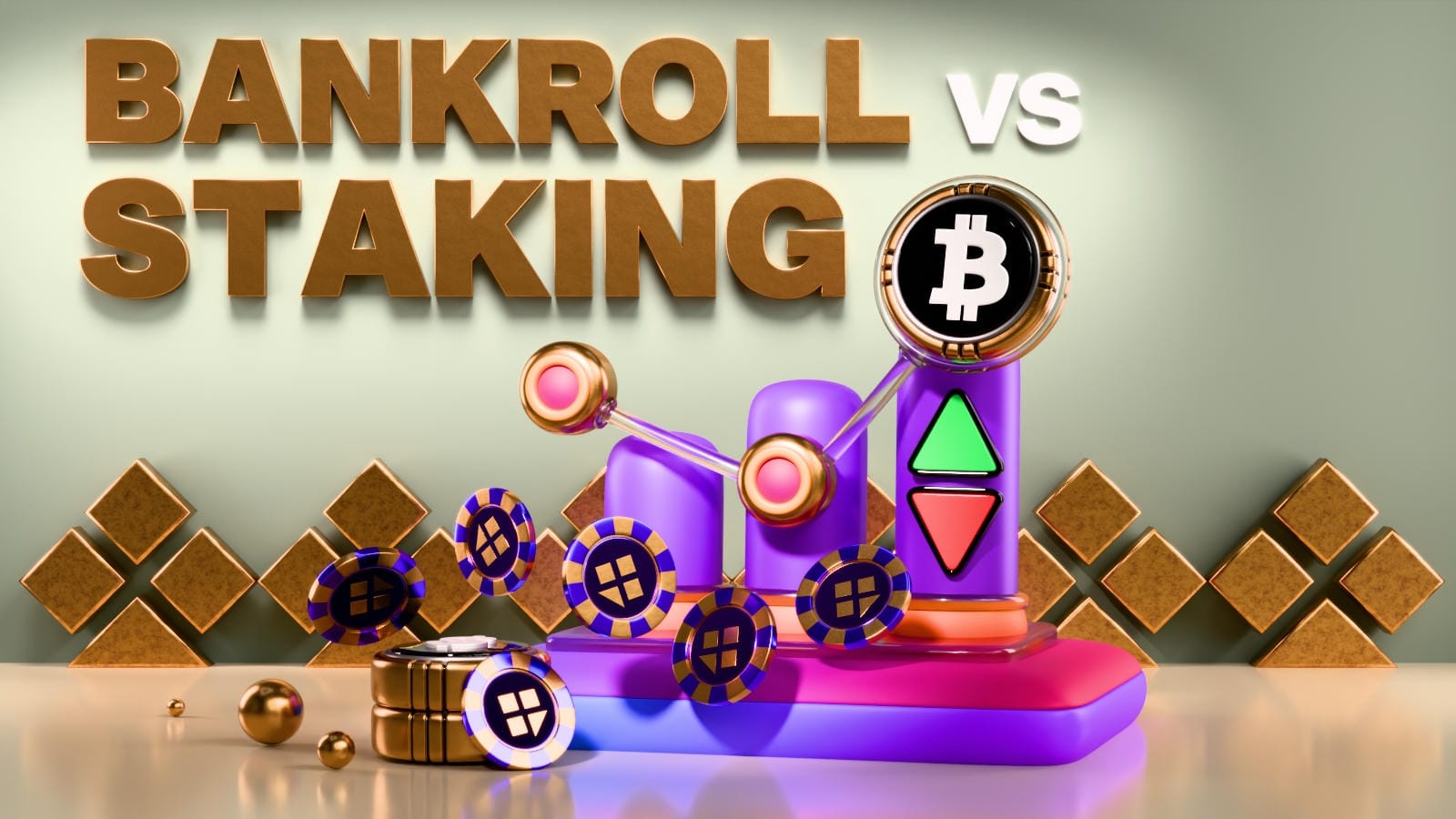Bankroll vs Staking: Which One Pays More in Crypto Casinos?

In the world of crypto casinos, two popular ways to earn without playing are rising fast: bankrolling and staking.
Both offer a path to passive income. Both sound simple. But here’s the catch — they’re not the same, and the rewards can vary wildly.
If you’ve ever asked:
- “Should I stake or bankroll?”
- “Which pays better over time?”
- “Which carries more risk or control?”
This article is for you.
We’ll break down the mechanics, compare the risks and rewards, and show you which method might be more profitable (and fun) — especially on Web3 casinos like Ridotto.
💸 What Is Staking in Crypto Casinos?
Staking typically means locking your tokens into a protocol in exchange for rewards — usually more of the same token. In a casino context, staking often helps the platform:
- Provide liquidity
- Power reward pools
- Support governance
In return, you get:
- Fixed or variable APR (Annual Percentage Rate)
- Platform tokens (e.g., $RDT on Ridotto)
- Sometimes voting rights or tiered benefits
Staking is passive and easy. You’re not exposed to actual gameplay outcomes — your rewards depend on tokenomics and platform policy.
🧪 Example:
You stake 10,000 $RDT on Ridotto. Over a month, you earn 400 $RDT as staking rewards — that’s 4% monthly, or ~48% APR (if sustained).
🏦 What Is a Bankroll in Crypto Casinos?
Bankrolling means funding a specific casino game’s liquidity pool. When players bet, win, or lose, the smart contract manages payouts and rewards. The house edge is your upside.
You’re not just supporting the platform — you’re providing the capital that powers the game.
When players lose, you profit.
When players win, you cover payouts (along with other bankroll providers). Your earnings come from the statistical edge built into the game.
🔁 Example:
- You contribute $5,000 to the bankroll for a blackjack game.
- The total pool is $100,000 (you own 5%).
- Over time, players lose $20,000.
- The 2.5% house edge returns $500 in profits.
- You earn 5% of that = $25 — just for providing liquidity.
On platforms like Ridotto, you can monitor your rewards in real time and withdraw or rebalance anytime.
⚔️ Bankroll vs. Staking — Head-to-Head Comparison
Let’s break down the differences in key areas:
1. Profit Model
| Category | Staking | Bankrolling |
|---|---|---|
| How you earn | Platform rewards (token inflation or fees) | House edge from actual games |
| Based on | Time locked, protocol APY | Game volume and player behavior |
| Passive? | Fully passive | Passive but influenced by gameplay |
Winner: It depends — staking is stable, bankrolling scales with player activity.
2. Risk Level
| Category | Staking | Bankrolling |
|---|---|---|
| Volatility | Low (but depends on token price) | Medium to high (player wins = bankroll loss) |
| Token price exposure | Yes | Yes |
| Gameplay exposure | No | Yes |
| Capital loss possible? | Unlikely (unless token crashes) | Possible if players win big or pool drains |
Winner: Staking is safer for conservative users. Bankrolling involves more dynamic risk.
3. Control & Flexibility
| Category | Staking | Bankrolling |
|---|---|---|
| Game-specific? | No | Yes (choose game bankrolls) |
| Withdraw anytime? | Often yes (depends on lock period) | Yes (usually unlocked or short lock) |
| Influence outcomes? | No | Indirectly (choose which games to bankroll) |
Winner: Bankrolling gives you more options and diversification per game.
4. Returns & Upside
| Category | Staking | Bankrolling |
|---|---|---|
| Typical return | 5–50% APR (varies by platform) | 10–100%+ (depending on game volume) |
| Max upside | Capped by tokenomics | Unlimited (if game goes viral or high volume) |
| Consistency | High | Variable, market-dependent |
Winner: Bankrolling can pay much more — especially on high-volume games.
💡 When Should You Stake?
Choose staking if:
- You want predictable, low-maintenance earnings
- You trust the platform and believe in the token
- You want to support the overall casino ecosystem
- You're risk-averse and don’t want gameplay exposure
Best for long-term holders, token supporters, or passive investors.
🎲 When Should You Bankroll?
Choose bankrolling if:
- You want a slice of every bet
- You’re comfortable with player win/loss fluctuations
- You want a more active earning strategy
- You enjoy tracking game performance and trends
Best for degens, active users, and those who want to “be the house.”
🧠 Why Ridotto Makes Bankrolling Easy
Unlike most crypto casinos, Ridotto is purpose-built for community-powered gameplay.
With Ridotto:
- You can bankroll any game with a few clicks — no code needed
- Rewards are fully transparent and on-chain
- You can track real-time performance and rebalance anytime
- Bankroll contributors earn passive returns when others play and lose
- You can also stake $RDT for predictable platform rewards
So you don’t have to choose — you can diversify between both.
🧮 What Pays More?
Short answer: Bankrolling pays more when volume is high.
- If a game goes viral or gets promoted, your share of the house edge can outperform any staking APY.
- However, staking provides consistency and lower downside — ideal during slow periods or market dips.
Pro tip: Use both! Stake a portion of your tokens for stable growth, and allocate some to bankroll high-traffic games. Rebalance weekly or monthly based on performance.
🏁 Final Verdict: Bankroll for the Win (But Know the Risks)
If you're asking which can pay more, the answer is bankrolling — especially on platforms like Ridotto where:
- Games are provably fair
- Bankrolls are accessible
- Players drive real volume daily
But if you're looking for set-it-and-forget-it earnings with less volatility, staking still plays a valuable role.
In Web3 gambling, the smart move isn’t always one or the other — it’s knowing how to leverage both for maximum profit and flexibility.

